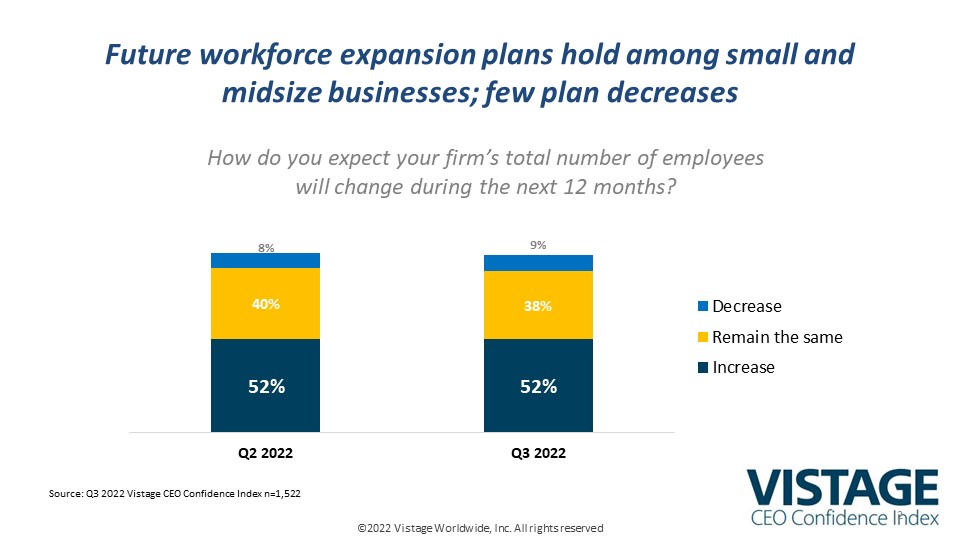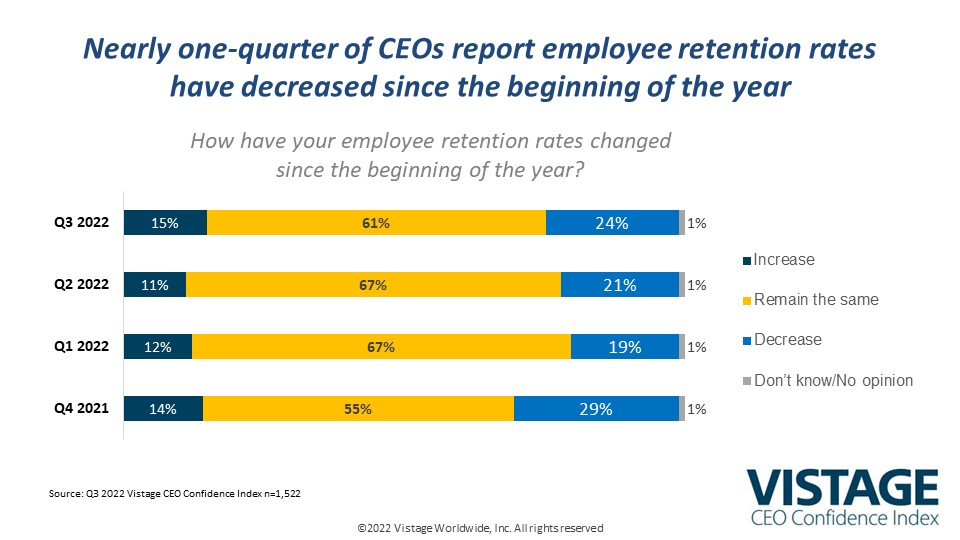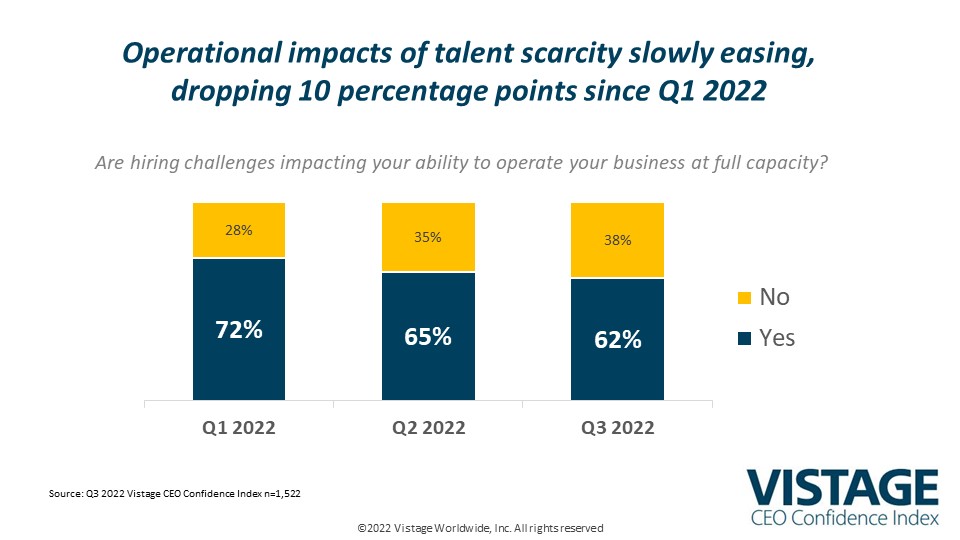Hiring still a top challenge for CEOs of small and midsize businesses

According to our latest research, over half (52%) of CEOs report plans to increase headcount in the year ahead, the same proportion as last quarter. That’s on top of the 53% of CEOs who have already increased headcount since the start of the year, compounded by the fact that 30% plan to hire more than originally planned.

On the other side of the talent equation, employee retention rates decayed slightly with 24% of CEOs reporting decreases in retention, an incremental decline from last quarter’s 21%. This is according to the Q3 Vistage CEO Confidence Index report.

Hiring continues to be the biggest contributor to inflationary pressures, with 91% of CEOs reporting that rising wages and compensation are impacting their business. Increases in wages also are a key strategy in hiring. Accordingly, 82% of CEOs have boosted wages to compete, with another 9% planning to boost wages in the future. In effect, this brings the total to 91%, which is basically all small and midsize businesses. With all the economic volatility over the last year, and in keeping with the theme of “good-bad” news, 62% of CEOs report hiring challenges are impacting their ability to operate at full capacity, a 10-point drop since earlier this year. However, that is still over 6-in-10 small and midsize businesses that don’t have the talent needed to meet customer demand.

The need for talent is not going to end soon. Short of a major recession that results in massive layoffs, there will continue to be more jobs available than job seekers. This gives workers leverage as they seek to “upgrade” their job status improving their responsibilities, compensation and flexibility. The push by some CEOs to mandate a return to the office will backfire, creating a retention risk for the segment of workers who value the flexibility that work-from-home (WFH) positions offer. With many companies now offering WFH work options, those workers will be able to find an opportunity that suits them better. Employee retention rates are the canary in the coal mine, a lagging indicator that tells CEOs that their workplace is not retaining — and probably not attracting — top talent.
The structures of the industrial-era, analog workplace have been replaced by the “Workplace 180,” referring to the 180-degree shift from the traditional, pre-pandemic model to those with remote, hybrid and flexible schedule offerings as revealed in our latest report, Decision Factors: Unleashing Workforce Productivity. In response to the COVID-induced workforce revolution, a new workplace is emerging that balances the productivity gains for individual tasks that are best done in isolation with the benefits of face-to-face interactions.
Unleashing workforce productivity will power those organizations that can find the right balance between home and office while penalizing in the form of turnover for those that don’t. The speed of change suggests there are no right answers, just constant monitoring of the most important asset of any organization: its people.
Related Resources
The CEO Pulse: Hiring Resource Center
Recruiting and retention in the workforce revolution [Webinar on-demand]

